Experienced flower enthusiasts know that incorporating a variety of colors in their gardens can enhance the enjoyment and allure of their gardening endeavors. Choosing to grow purple perennial flowers can be a great choice as they require less upkeep than annuals, as they naturally regrow year after year. This not only saves you time and energy but also adds a touch of elegance to your garden or yard. Here, we have curated a collection of beautiful purple perennials that would make a wonderful addition to your outdoor space.

Preferred Option: Exuberant Violet African Sunflowers
In terms of flower selections, the unbeatable pick would undeniably be the lively and captivating Violet African Sunflowers.
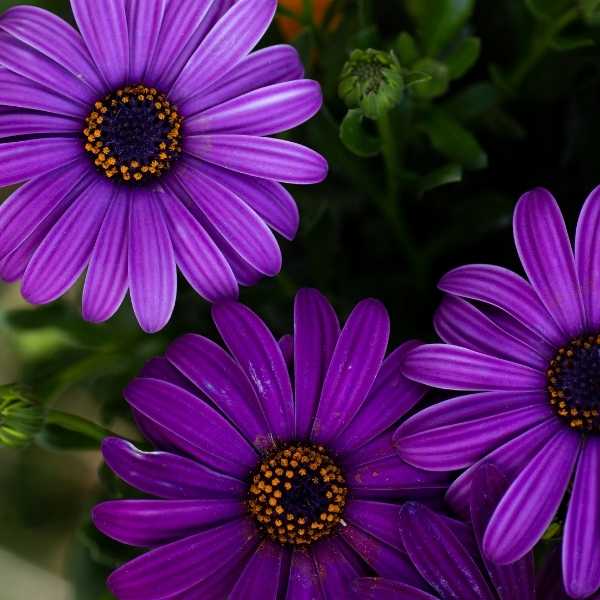
African daisies, also known as Arctotis, are captivating perennial plants that originate from Africa and Asia. These extraordinary plants possess an array of vibrant colors, including enchanting shades of purple, adding a touch of allure to their resemblance to the familiar white and yellow daisies. The leaves of African daisies exhibit a smooth texture and a charming variety of lance-shaped and oval shapes. The petals of their flowers can either lie flat or boast a tubular structure, with mesmerizing metallic-like patterns adorning their centers.
Standing tall at a height of 1 to 3 feet, African daisies burst into a splendid display of blooms during the summer season, gracing us with their presence for several delightful weeks. They thrive best in regions classified as zones 10 and 11, where they can luxuriate in abundant sunlight and thrive in well-drained soil. What makes these daisies even more remarkable is their ability to endure dry conditions once they have acclimatized, displaying resilience and withstanding periods of drought. Immersing ourselves in the world of daisies provides us with a delightful range of options to explore.
#2. Majestic Purple Butterfly Bush
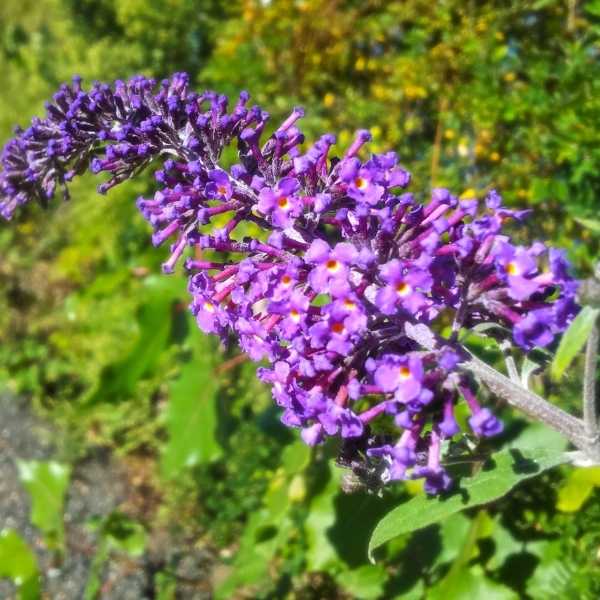
Hailing from Asia, the Butterfly bush has gained its reputation for its remarkable magnetic pull on pollinators, specifically butterflies, bees, and even hummingbirds. Its leaves have a rough sage green texture, while its flowers form in beautiful spikes made up of multiple small blossoms grouped together. Reaching an impressive height of up to 12 feet, the butterfly bush displays a dazzling array of colors, ranging from enchanting purples and pinks to vibrant yellows, whites, and blues. Ideally thriving in zones 5 through 9, this plant thrives in areas with plenty of sunlight and soil that drains well. Interestingly, the butterfly bush displays its resilience by flourishing even in harsh and challenging environmental conditions.
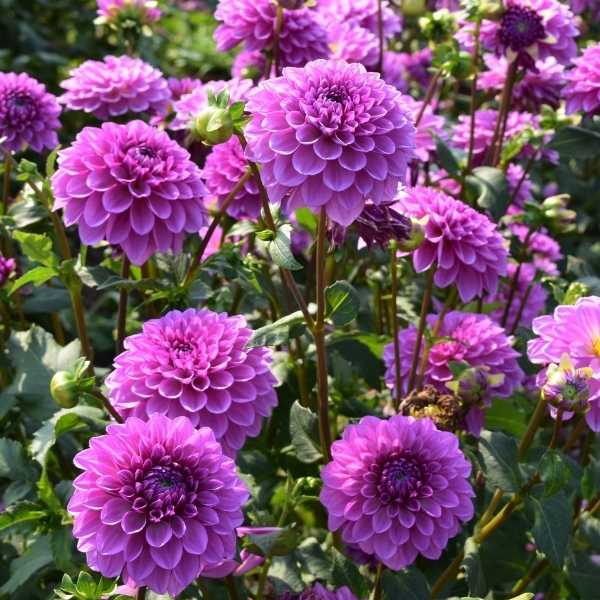
Let’s take a moment to admire the breathtaking Dahlia flower, native to the vibrant lands of Central America and Mexico. These captivating blooms, with their multitude of petals, stand proudly atop their tall, straight stems. Not only do they dazzle in majestic shades of purple, but Dahlias also come in a splendid variety of vibrant colors that are bound to catch anyone’s attention.
For gardeners interested in cultivating these beauties, it’s important to keep in mind that Dahlias thrive best in regions 8 to 11, where they can flourish as perennials. These flowers adore the warm embrace of the sun and require moist, well-drained soil to truly thrive. As they grow, Dahlias can reach impressive heights, ranging from a modest 2 feet to soaring towers of 7 feet. However, it’s important to exercise caution if you have furry friends at home, as these remarkable flowers can be toxic to dogs and cats.
Now, let’s turn our attention to the delightful Dalmatian Bellflower.
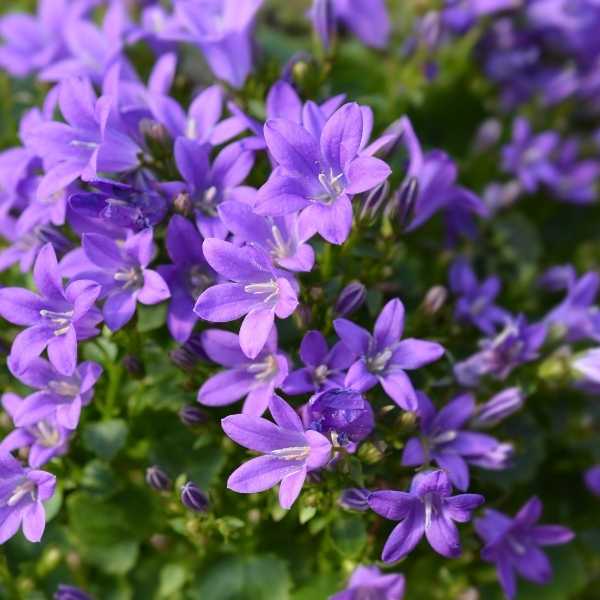
Originating from the stunning landscapes of Europe, particularly the renowned Dalmatian Mountains in Croatia, the Dalmatian Bellflower has carved its place in the world of flora. As a perennial plant, it flourishes in regions classified under zones 3-9 and is highly sought after for its delicate bordering capabilities.
What sets the Dalmatian Bellflower apart are its distinct features. Its lush green foliage provides a beautiful backdrop for the vibrant colors that adorn its six petal flowers. These flowers showcase a striking array of purple hues, resembling the elegant shape of a bell or the enchanting sparkle of a star. Nature’s artistry unfolds as these captivating blooms stretch up to a height of six inches, demanding attention and admiration.
To ensure the Dalmatian Bellflower thrives and flourishes, it prefers to bask in ample sunlight or find refuge under subtle shades. It thrives in moist, well-drained soil, showcasing its resilience and embodying grace and elegance.
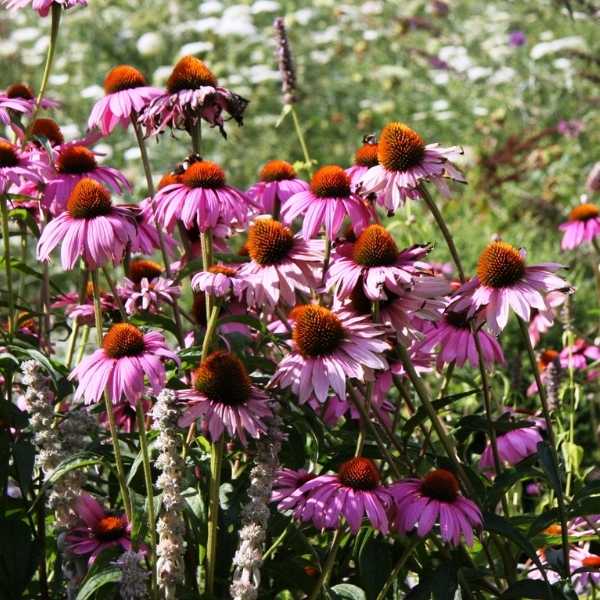
Native to North America, coneflowers are a beautiful type of flower belonging to the daisy family. Among the many varieties, the purple coneflower is especially popular due to its distinctive characteristics. Its lower stems have a prickly texture and are adorned with raised cone-shaped centers, which give the flower its name. These lovely blooms thrive in zones 3 to 9 and require 6 to 8 hours of sunlight each day to reach their full potential. Interestingly, coneflowers are not particular about the type of soil they are planted in, as long as it is well-drained.
In addition to their visual appeal, coneflowers also play a functional role by attracting various pollinators such as butterflies, bees, and birds. These vibrant flowers are a treat to behold and their presence in a garden can create a lively and inviting atmosphere. Moreover, coneflowers can be carefully cut and used to create stunning floral arrangements to brighten up indoor spaces. With their unique features and versatility, it’s no wonder that coneflowers are highly sought-after by gardening enthusiasts.
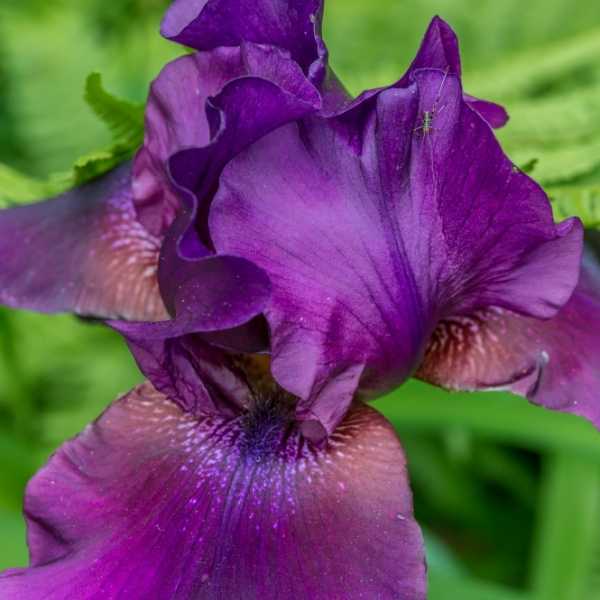
Lilacs, which are also referred to as Syringa, are a well-liked shrub native to Europe and Asia. This lovely plant is highly distinctive due to its clusters of aromatic blossoms, which come in a range of hues such as purple, white, and pink.
With their delicate petals and captivating fragrance, lilacs are truly captivating. Typically blooming in the spring, these flowers are frequently used in bouquets and floral arrangements. Beyond their visual appeal, lilacs possess a significant historical and symbolic significance, representing love, innocence, and the arrival of spring.
When it comes to cultivating lilacs, they are relatively easy to grow. While they have the ability to adapt to different growing conditions, they thrive in well-drained soil and full sun. Lilacs can flourish in a variety of hardiness zones, but they tend to do best in zones 3 to 7.
While these charming shrubs attract pollinators like butterflies and bees, it is important to keep in mind that they are not suitable for households with dogs and cats. Lilac plants can be toxic and harmful if ingested, so it is crucial to keep beloved pets away from them.
To sum up, lilacs are a delightful addition to any garden or landscape. Their vibrant colors, enchanting fragrance, and ease of cultivation have made them a favorite among gardeners and flower enthusiasts. However, pet owners should exercise caution to ensure the safety of their furry friends when introducing lilacs to their outdoor spaces.
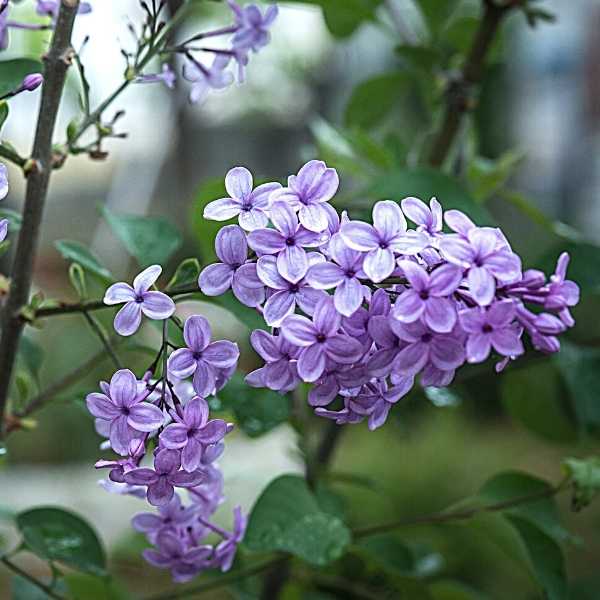
When it comes to purple flowers, one of the most popular choices is the beautiful lilac. These stunning blossoms can be found on bushes, trees, or vines and are well-known for their toughness and longevity, often surviving for more than a hundred years. Not only are lilacs visually appealing, but they also fill the air with a delightful fragrance. While lilacs can come in different shades, they are most famous for their lilac and deep purple colors. These bushes typically grow to be around 8 to 10 feet tall. The flowers usually bloom from spring to early summer, offering their vibrant display for approximately six weeks. To thrive, lilacs prefer zones 3 to 7 and require full sunlight as well as well-drained soil that remains consistently moist. It’s worth noting that these flowers also attract butterflies and birds, which adds an extra touch of charm to any garden or landscape.

The Princess Flower is a botanical gem that immediately brings to mind the mesmerizing color purple. Native to the Mediterranean region, this remarkable plant can grow anywhere between 1 to 3 feet tall. Its dainty leaves display a subtle tinge of grayish-green, while its regal blossoms proudly display a captivating shade of purple. One of the standout features of the Princess Flower is its powerful fragrance, which has become synonymous with its name.
For optimal growth, the Princess Flower thrives in zones 4 to 9 and requires ample sunlight and well-drained soil. However, it’s important to keep in mind that this enchanting plant can be harmful to dogs and cats, as it contains toxins that may pose a threat to their well-being.

Originating from Brazil, the Princess flower is a popular choice for gardening enthusiasts in the United States, where it is often cultivated as a small shrub or tree. Its leaves are soft and velvety, with striking red edges, measuring anywhere from 2 to 6 inches in length. But the true spectacle of this flower lies in its magnificent purple blossoms. These blossoms boast five petals and can reach an impressive width of 3 to 5 inches.
The Princess flower is not a picky plant when it comes to its environment. It can thrive in regions ranging from zones 9 to 11, showcasing its adaptability to different conditions. While it prefers partial shade, it can still flourish under direct sunlight, as long as the soil is well-drained. What makes this flower even more remarkable is its ability to bloom all year round, particularly in hotter climates.
In conclusion, the purple Princess flower is just one example of the beautiful and elegant purple flowers that you can incorporate into your garden or landscape. There are many more options to explore and discover, each bringing their own unique charm and allure.

